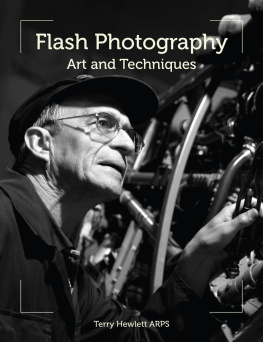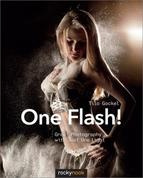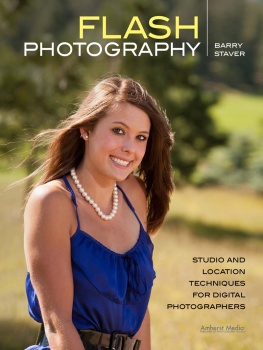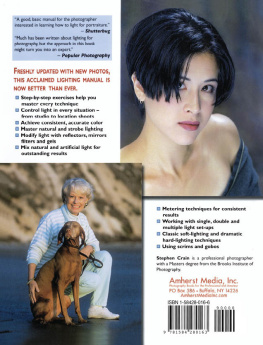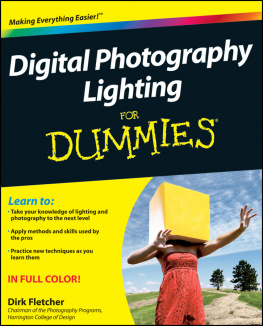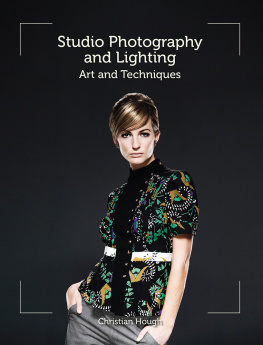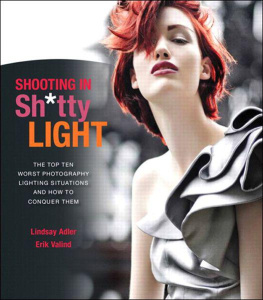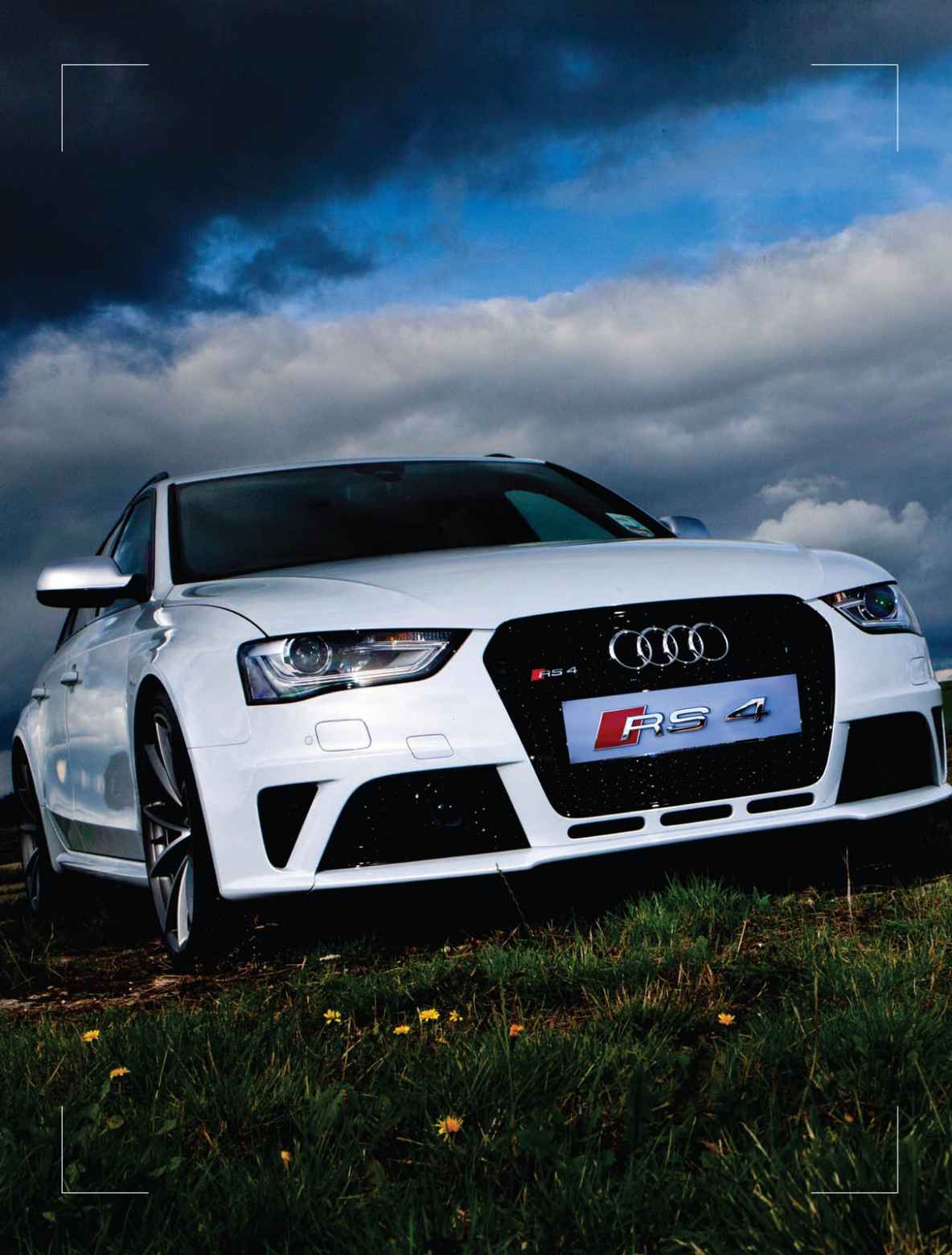
Flash Photography
Terry Hewlett

CROWOOD
First published in 2014 by
The Crowood Press Ltd
Ramsbury, Marlborough
Wiltshire SN8 2HR
www.crowood.com
This e-book first published in 2014
Terry Hewlett 2014
All rights reserved. No part of this publication may be reproduced or transmitted in any form or by any means, electronic or mechanical, including photocopy, recording, or any information storage and retrieval system, without permission in writing from the publishers.
British Library Cataloguing-in-Publication Data
A catalogue record for this book is available from the British Library.
ISBN 978 1 84797 767 0
Frontispiece: A location shot for Swindon Audi of the RS4 using three speedlights placed around the vehicle. 13 @ 1/125s ISO 200
Acknowledgements and Thanks
A very big thank you to the following for their continued support in producing this book.
Brian Collier and Chris Whittle, The Flash Centre (www.theflashcentre.com); Hardy Haase, Flaghead Photographic Limited (www.flaghead.co.uk); Lastolite (www.lastolite.co.uk); Wescott (http://fjwestcott.com); The Mayfield House Hotel; Stanton Manor; Audi Swindon; Richard Stork, Gunsmith; Harriet James, Sundials; Hector Cole, Arrowsmith; Ian Murray-West, Woodturner; Ian Sherman, Bath Aqua Glass; Linda Rees, Eco Sculptress; Tim Parry, Weaver; Vivien Sheriff, Milliner; Gordon and Dorothy Whittle, Spinner; Hart Silversmiths.
CONTENTS
Introduction
N owadays almost everyone owns a camera. The inevitable result is that more than 300 million photographs are uploaded to Facebook every day, making it the most constantly updated photo album on the planet. Even though images taken on camera phones with automatic flash functions are hideously lit, they still generate likes that dumb down the viewers expectations, a situation that cannot be good for the art of photography.
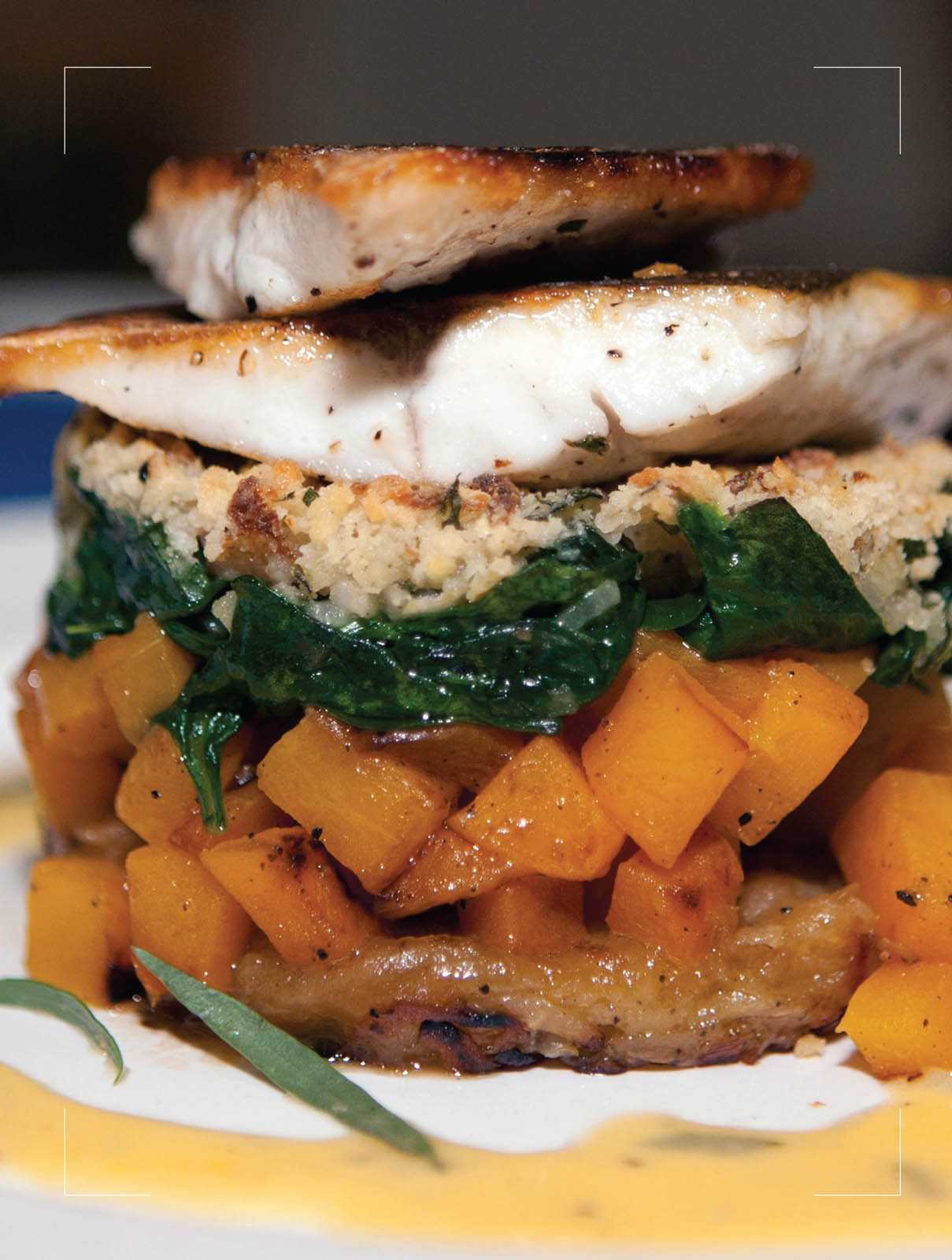
Fig. 0.0
Fine dining. Taken during a Chef v Chef competition where it was not possible to set up an array of lights, so on-camera flash was used, bounced from the surrounding white walls and ceiling. 2.8 @ 1/400s (High speed sync activated) ISO 400
Cameras available range from simple camera phones, through point-and-shoots to mid- and high-end DSLR (Digital Single Lens Reflex) cameras. Most, if not all, have a flash unit either built in or available as a non-dedicated or dedicated flashgun, often called a Speedlite (Canon), Speedlight (Nikon) or just plain strobe. Large numbers of owners, though, are dissatisfied with the results they obtain from their flash or they are using it in a way that produces no effect whatsoever.
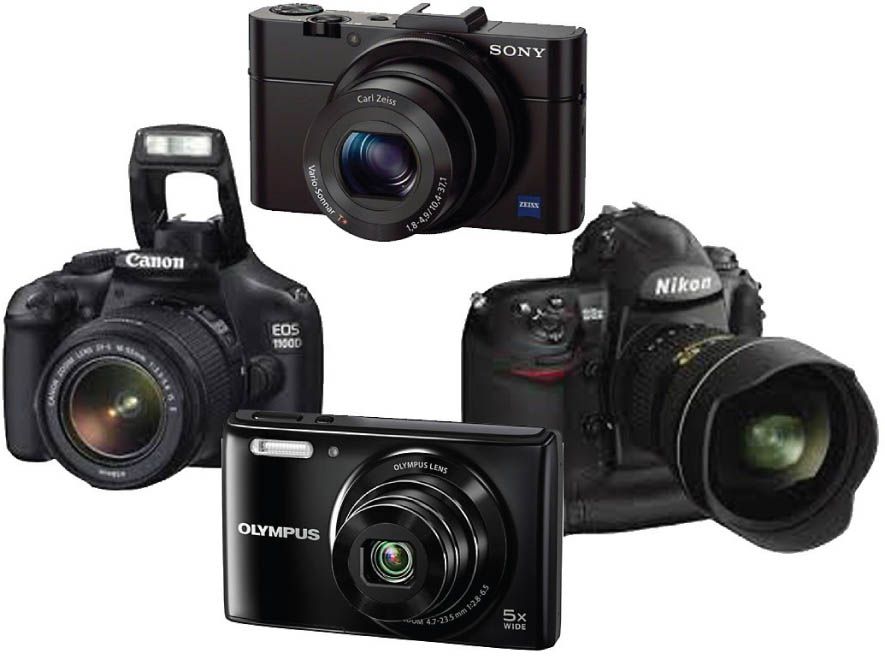
Fig. 0.1
Digital cameras range from small point-and-shoot camera phones through to sophisticated all-singing, all-dancing models with varying options for flashguns.
It is common to see flashes firing in a large stadium environment where the owners of compact cameras, with in-built flash, have not disabled the flash function or do not understand their cameras functions. The camera will automatically fire the flash in low light, but this has no impact whatsoever on the intended subject more than 100m away, only succeeding in overexposing the back of the head of the person seated or standing in front. This is due to a simple law well, maybe not so simple called the inverse square law (see ) and how light falls aways exponentially.
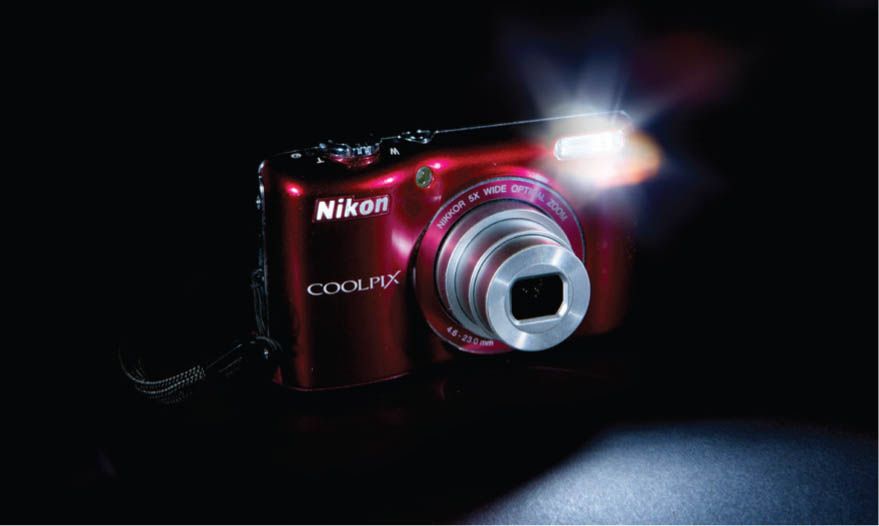
Fig. 0.2
Compact cameras and camera phones have a built-in flash unit that produces a very small and hard light source.
After disappointing results, with subjects over-lit and hard shadows thrown both on and behind the subject, not to mention the demonic red-eye, many photographers prefer to avoid the use of flash. You need to have a clear understanding of what the flash can produce. Unlike studio lighting or ambient light photography, you cannot see the end result until you have taken the shot, as there is no usable modelling light. The phenomenon that is Facebook has led to a common, almost resigned, acceptance of posting badly lit photographs online. It can be argued that many photographs do not require additional lighting from a flash unit and indeed an image can be ruined because flash produces undesirable results. In these circumstances the photographer may resort to the get-out clause available on all flashguns, the off switch, or just leaves it in the bag.
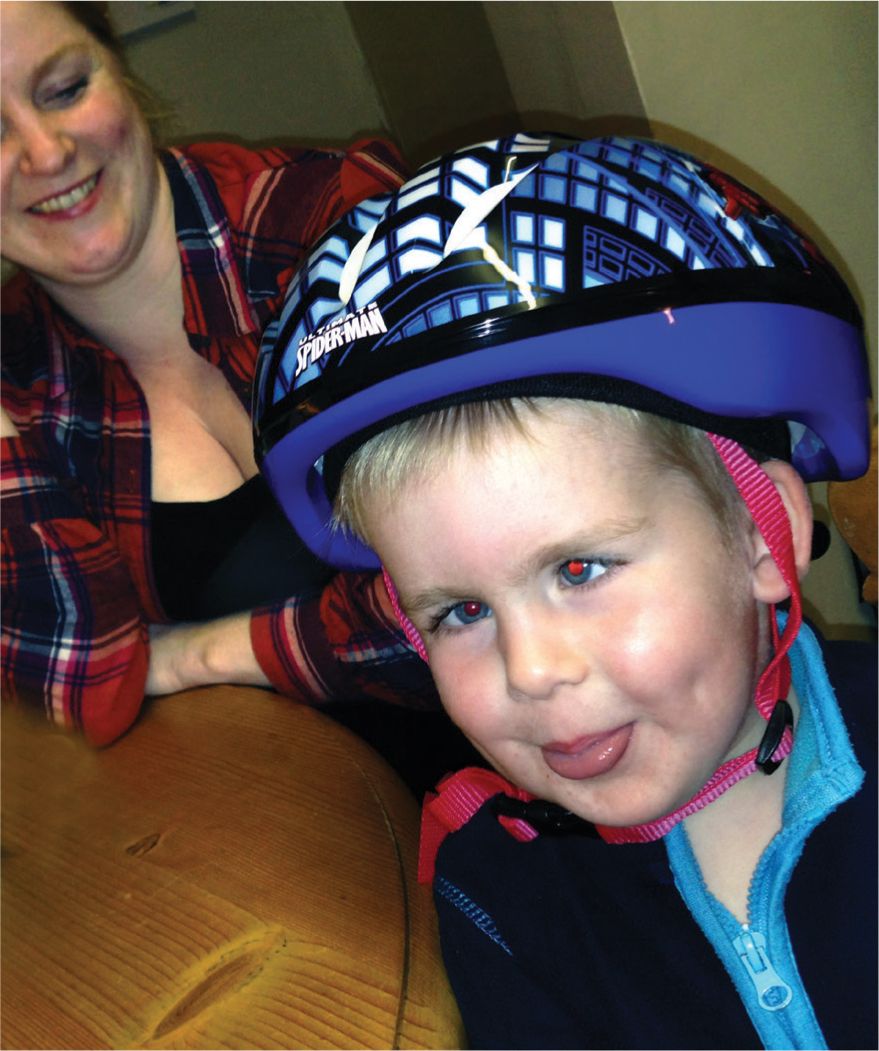
Fig. 0.3
Red-eye is produced when the flash is very close to the lens axis and light bounces back from the blood vessels at the back of the retina. Cameras such as the iPhone that took this shot also characteristically produce a hard shadow behind the subject, just visible in this image. 2.4 @ 1/20s ISO 80 AWB (Auto white balance)
As light travels in straight lines, firing a flash directly at a reflective surface will result in the light flaring back at the camera. This happens when a compact flash fires straight at a person and the light reflects back from the blood vessels in the retina, causing red-eye because the flash is so close to the lens axis.
Modern cameras have built-in red-eye reduction created by firing a pre-flash to close up the iris of the eye, so reducing the amount of light that is reflected back. As the light hits a reflective subject, however, it is reflected back at the same opposing angle as it has struck the subject, much like a tennis ball bouncing; in other words, the angle of incidence equals the angle of reflection.
The vocabulary of photography is writing or scribing with light (from the Greek photos for light and graphos for drawing), but it is shadows that give shape and form to a subject. Without shadows the subject will appear flat and uninspiring. It is the shadows that give shape, depth and form to a subject. That is why careful control of the flash is critical because of the harsh shadows created by its small light source.
Light itself has four main characteristics: intensity, direction, quality and colour. (There are more, but we will concentrate on just these.) A comprehensive and detailed understanding of these principles is essential if you wish to get your head around the complexities of flash and produce creative images. The complex matrix of controlling the lighting environment with a light you cannot see, emitted from a strobe, combined with the intricacy of modern flashguns and their ever-expanding menus, appears somewhat daunting, even without taking the eternal triangle of ISO, shutter speed and aperture into account. A back-to-basics approach is required.
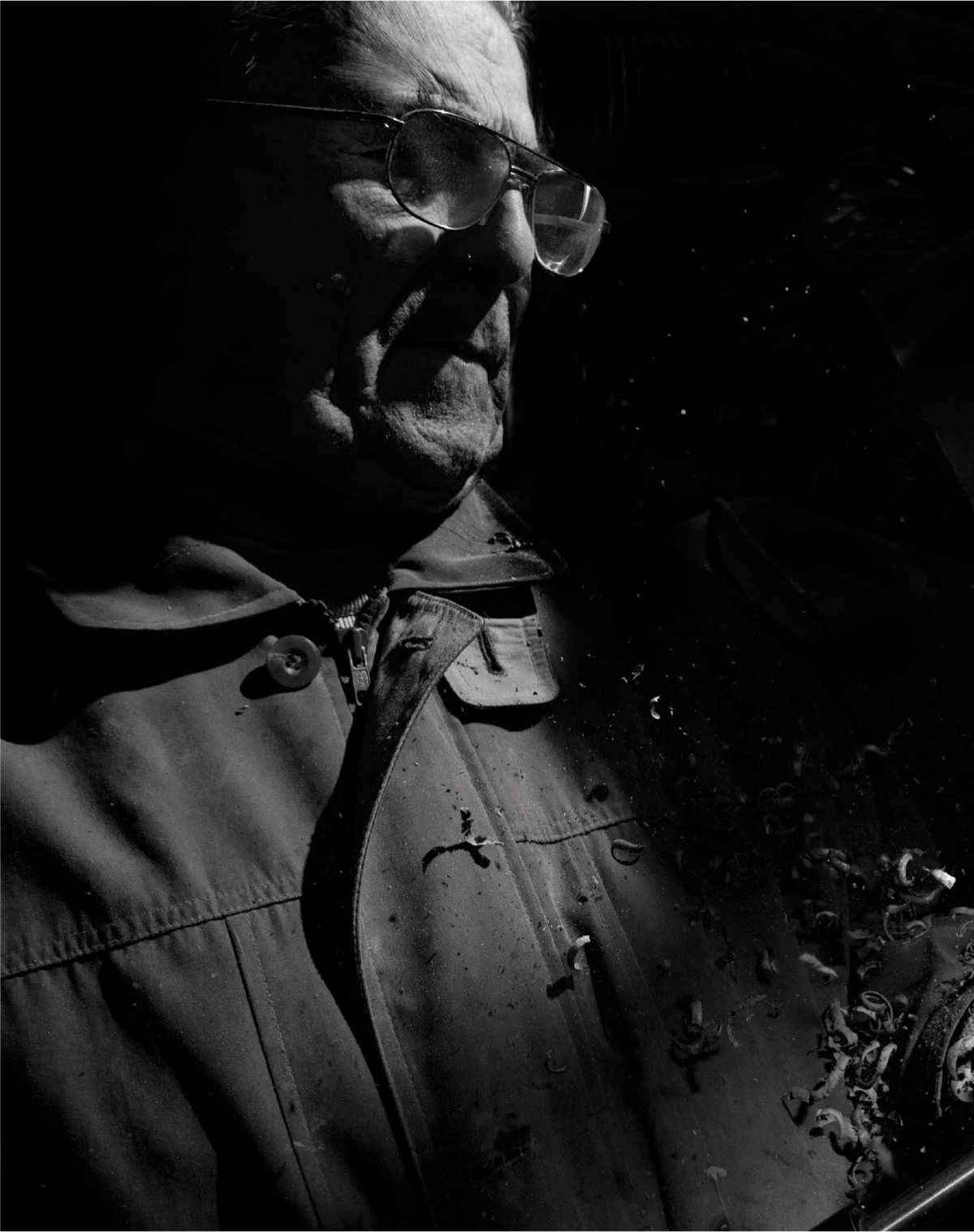
Fig. 0.4
This portrait of a wood turner was lit with several lights. One was high and to the right, while another was low and on the right, next to the shooting position, from where I was covered in wood shavings. 8 @ 1/125s ISO 400
Next page
